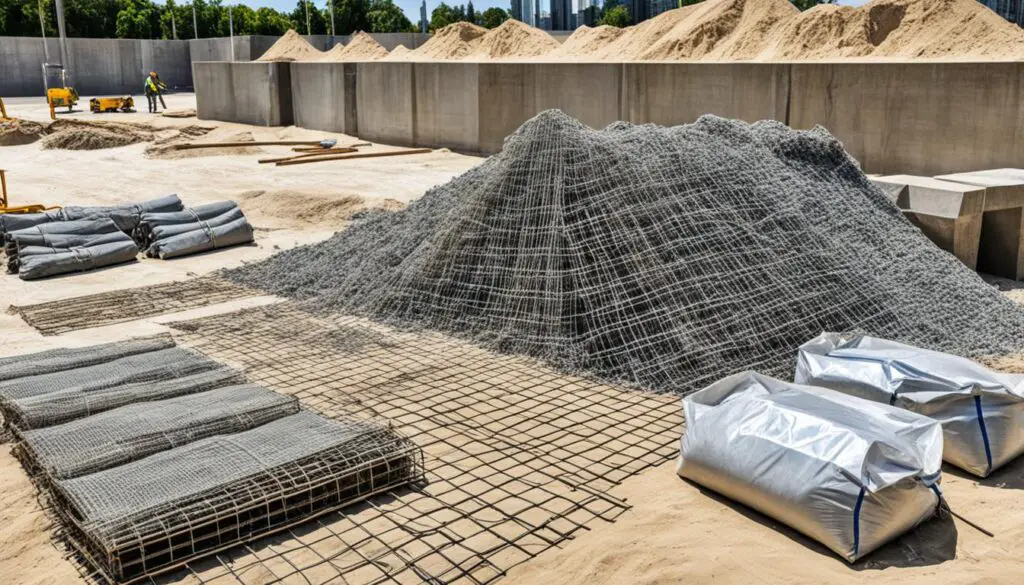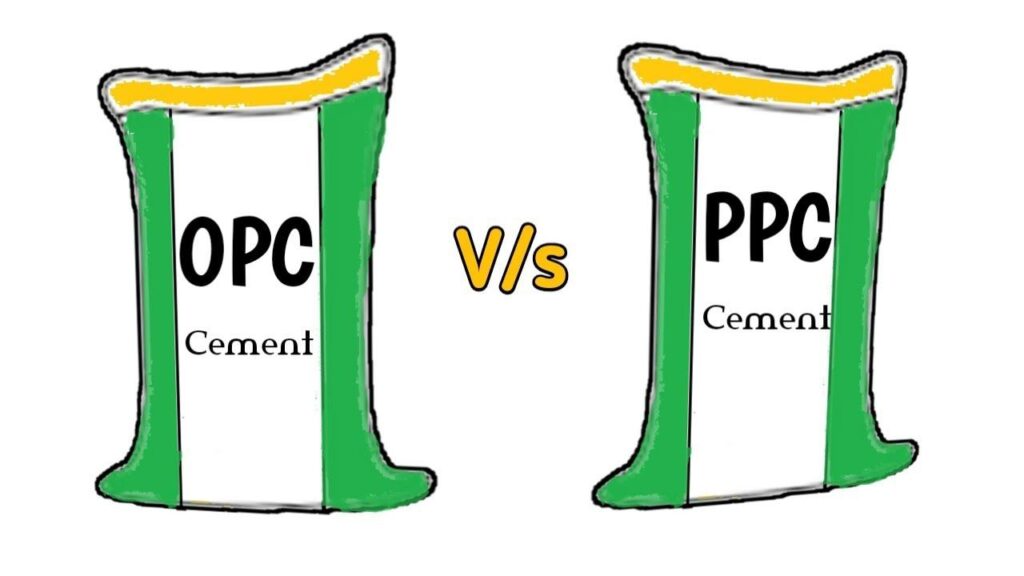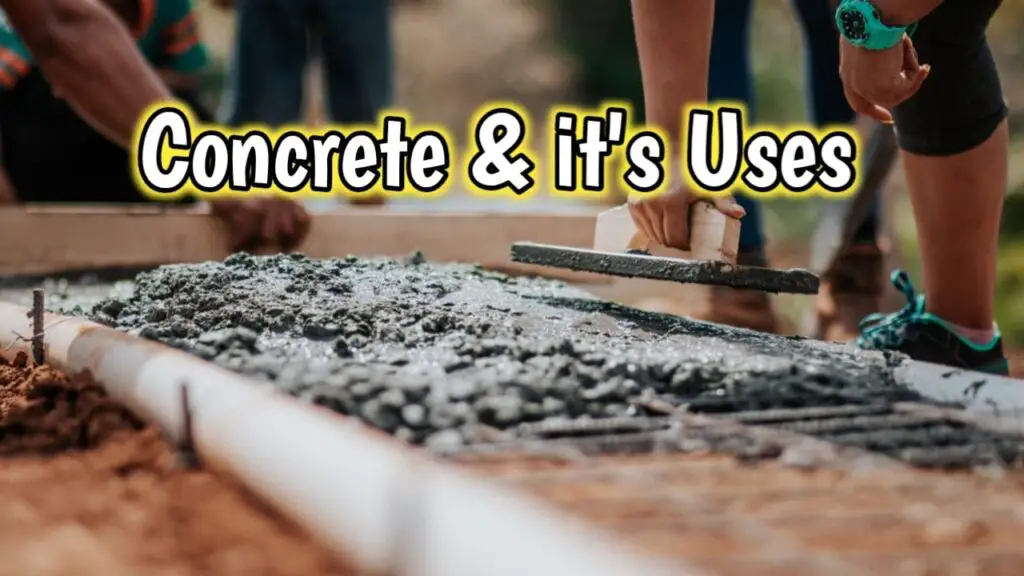In this article, we will provide a comprehensive guide to Ferro Cement, a versatile construction technique. We’ll explore its definition, the materials required for its construction, its properties, applications, advantages, and disadvantages. Ferro Cement or armored concrete is a popular choice due to its durability, flexibility in design, and cost-effectiveness, especially for those looking for a lightweight alternative to traditional construction methods.
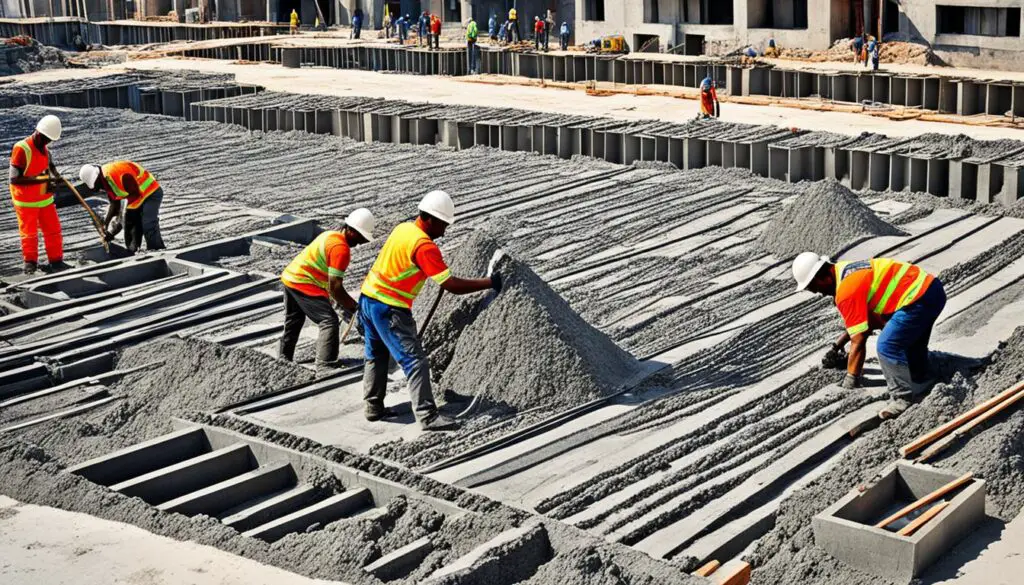
Key Takeaways:
- Ferro Cement is a versatile construction technique that offers durability, flexibility in design, and cost-effectiveness.
- The properties of armored concrete Cement include strength, durability, resistance to cracking, corrosion, and fire.
- Its applications range from residential, commercial, and industrial to specific uses like roofing, water tanks, boats, sculptures, and architectural elements.
- Ferro Cement has advantages over traditional construction methods in terms of durability, ease of construction, versatility, and low maintenance requirements.
- The disadvantages of armored concrete Cement include potential challenges in construction and maintenance.
What is Ferro Cement?
In this section, we’ll provide you with a definition of armored concrete and explain the technology behind it. Ferro Cement is a type of construction material that originated in Italy in the mid-19th century. Its composition consists of a thin layer of cement mortar reinforced with layers of steel or fiber mesh.
Compared to traditional concrete structures, Ferro Cement is stronger, lighter, and more durable, thanks to its high tensile strength and flexibility. It’s an ideal construction material for building elements that require a thin profile but high strength, such as boats, water tanks, sculptures, decorative panels, and more.
The technology behind armored concrete involves creating a skeleton or framework of steel or iron rods, which is then covered with layers of finely woven steel or fiber mesh. The cement mortar is applied by hand, layer by layer, to cover the entire structure, and allowed to dry and cure. This combination of materials creates a highly resistant and flexible structure that can withstand heavy loads, impacts, and extreme weather conditions.
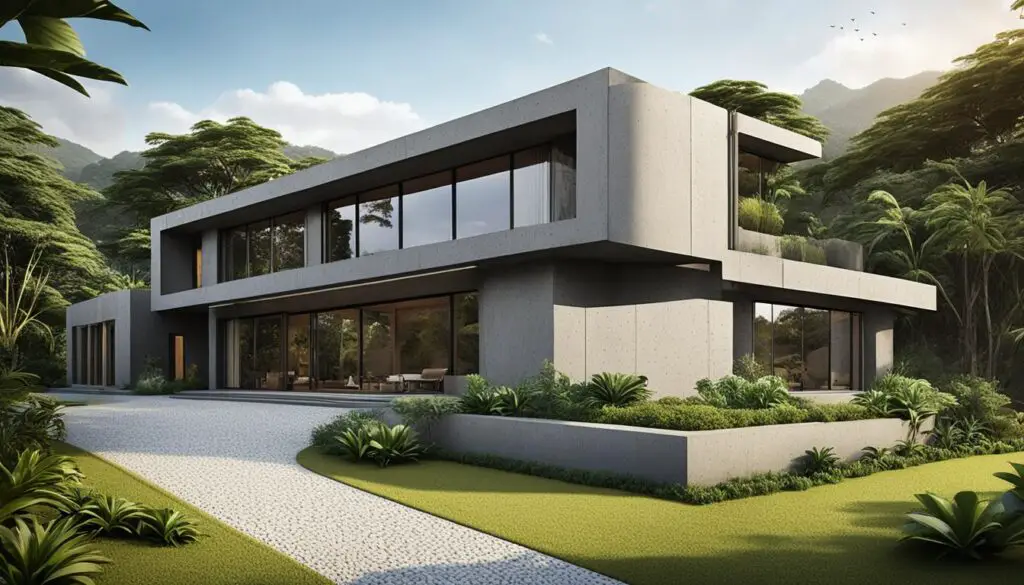
“Armored concrete is not just a construction material; it’s an art form that allows for endless creativity and flexibility in design.”
– Chris Cole, Founder of Colecraft Engineering
Materials Required for Making Ferro Cement
Creating armored concrete involves using various materials, each playing a critical role in the finished structure’s strength and durability. The following components are essential when making Ferro Cement:
| Materials | Description |
|---|---|
| Cement Mortar | Ordinary Portland cement is mixed with sand, water, and a bonding agent to create a strong, adhesive composite. |
| Framework or Skeleton | A steel or wooden structure that shapes the armored concrete Cement. It is designed to withstand the stresses of the construction process and hold enough tension to support the cement and mesh. |
| Steel Mesh | A reinforcement is woven into a specific pattern to create a cage-like structure and hold the cement tightly in place. |
| Fiber Mesh | A secondary reinforcement that features a unique blend of polypropylene or nylon fibers. It is added to improve the cement’s tensile and flexural strength while reducing cracking. |
These four primary materials, combined with labor, expertise, and time, result in a strong and long-lasting armored concrete structure. The correct proportion of materials is critical in ensuring a well-bonded composite with no cracks or weaknesses.
We cannot stress enough the importance of high-quality materials when creating Ferro Cement structures. The outcome is directly linked to the quality of the materials used.

Application of Ferro Cement
Our discussion on Ferro Cement would be incomplete without mentioning its various applications. Its versatile nature and high strength make it a desirable choice for a diverse range of construction projects. Below are some of the applications of armored concrete:
| Residential Buildings | Ferro Cement is ideal for building residential homes, including walls, columns, and roofs due to its lightweight and durable properties. It is also flexible, allowing for custom designs that fit various architectural styles. |
|---|---|
| Commercial Buildings | Armored concrete has widespread use in commercial buildings such as offices, factories, and warehouses, where stability and safety are paramount. It is often used for facades, floors, and beams, among other things. |
| Industrial Structures | Armored concrete is used in various industrial structures such as bridges, tunnels, and water tanks due to its high tensile strength. It is also resistant to corrosion, making it excellent for applications exposed to the elements. |
These are just a few examples as Ferro Cement can be an ideal choice for almost any construction project.
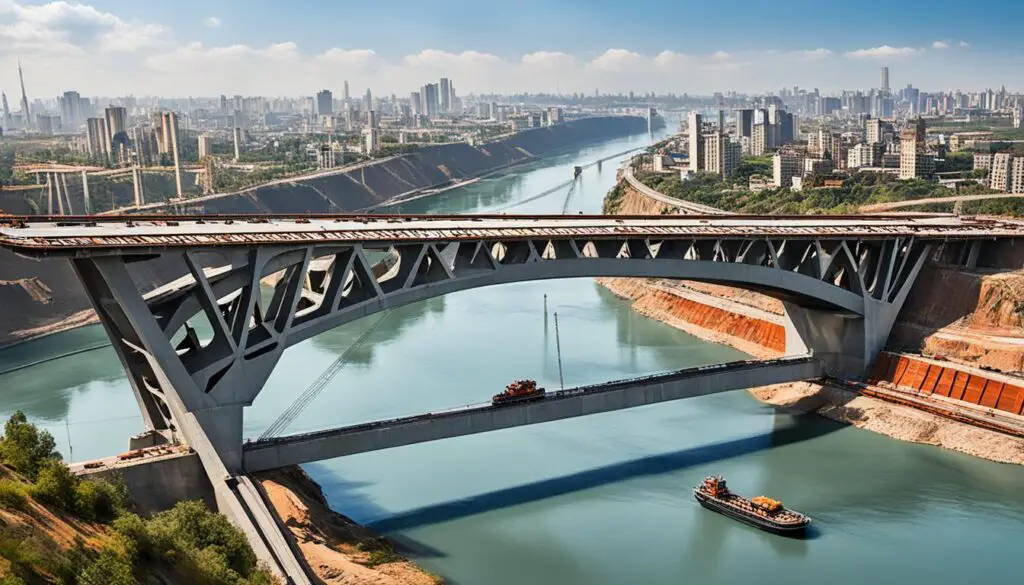
Ferro Cement is a versatile construction technique that has found diverse applications across various industries. Here, we will showcase six different areas where armored concrete has been successfully utilized, highlighting its durability, strength, and cost-effectiveness.
Roofing
Ferro Cement is a popular choice for roofing due to its lightweight nature and resistance to water damage. Its durability and strength also make it a suitable alternative to traditional roofing materials. It is commonly used for flat or low-pitched roofs and can be molded into various shapes and sizes, making it a flexible option for diverse roofing needs.
Water Tanks
Ferro Cement is an excellent choice for constructing water tanks due to its low permeability and resistance to corrosion. Its lightweight nature also makes it an attractive option for water storage facilities. armored concrete water tanks are a cost-effective and durable solution for both residential and commercial applications.
Boats
Ferro Cement is a popular material for boat construction due to its strength and lightweight properties. Its malleability also allows for custom designs and shapes, making it ideal for bespoke boat construction. armored concrete boats are known for their durability, longevity, and low maintenance requirements, making them an economical choice for boat enthusiasts.
Sculptures
Ferro Cement is a favorite material for sculptors due to its versatility and ability to hold intricate designs. Its strength and durability make it ideal for creating large-scale art sculptures, such as public monuments or garden sculptures. armored concrete sculptures are both aesthetically pleasing and long-lasting, providing a cost-effective alternative to other materials.
Architectural Elements
Ferro Cement is also used to create a wide range of architectural elements, including balustrades, columns, archways, and garden ornaments. Its flexibility allows for the creation of custom designs, while its strength and durability ensure the longevity of the finished product. armored concrete architectural elements are a cost-effective choice that can withstand harsh weather conditions and maintain their appearance over time.
Decorative Wall Panels
Ferro Cement is a popular choice for creating decorative wall panels due to its versatility and aesthetic appeal. It can be molded into a variety of designs, ranging from contemporary to traditional, and is a durable and cost-effective option for both interior and exterior wall cladding. armored concrete wall panels are low maintenance and offer a long-lasting and attractive finish to any building.
These are just some examples of the various applications of Ferro Cement, demonstrating its suitability for diverse construction projects. Its durability, strength, and cost-effectiveness make it a desirable choice in many industries.
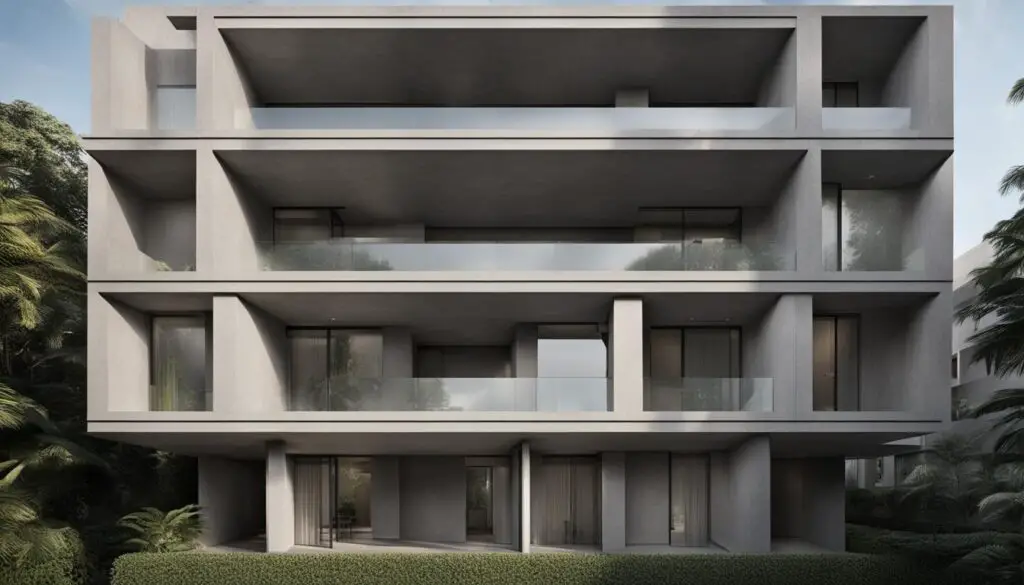
Properties of Ferro Cement
When it comes to the properties of armored concrete, its exceptional strength, durability, and resistance to cracking, corrosion, and fire make it a popular choice for construction projects.
Thanks to the addition of steel or fiber mesh reinforcement, Ferro Cement structures can withstand heavy loads and extreme weather conditions. This is because the steel or fiber mesh helps distribute the load across the entire structure, making it more stable and resistant to deformation.
Furthermore, armored concrete is an excellent insulator, providing a high degree of thermal resistance. This helps regulate the temperature inside buildings, reducing the need for heating and cooling systems and lowering energy costs.
Another key property of Ferro Cement is its flexibility in design. It can be molded to any shape or size, allowing for endless architectural possibilities. Additionally, it is lightweight, making it easier to transport and construct.
Whether it is to build water tanks, sculptures, boats, or any other structure, armored concrete offers a range of advantages over traditional construction materials, including its superior properties.
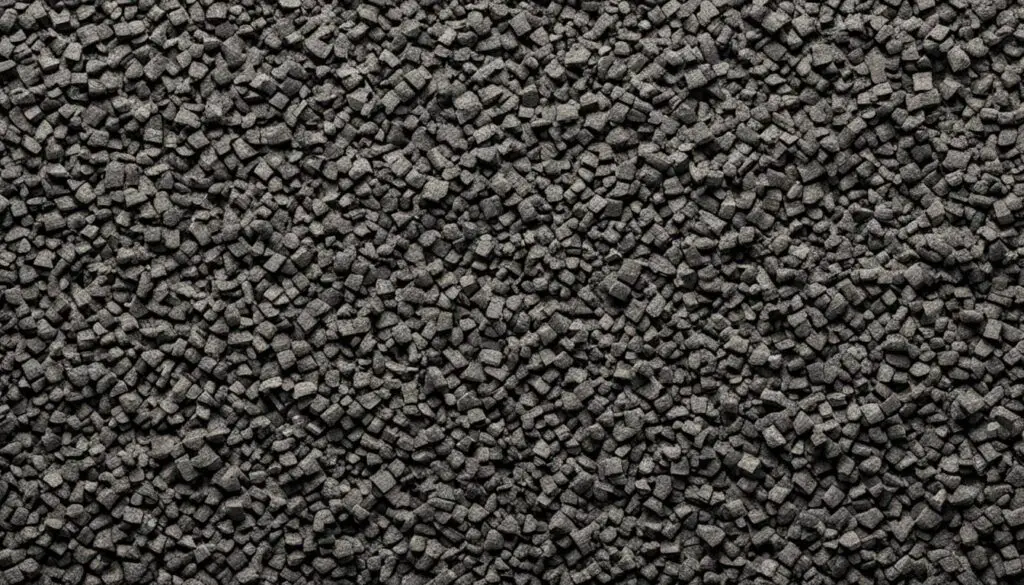
Benefits of Ferro Cement
At our company, we believe that Armored concrete offers numerous benefits over traditional construction methods. One of the standout features of Ferro Cement is its lightweight nature, which makes it an ideal choice for building structures that require a high strength-to-weight ratio. Its flexibility in design is another benefit, providing builders with the freedom to create complex and intricate shapes that would be difficult to achieve with other materials.
Another compelling benefit is its cost-effectiveness. Armored concrete structures require minimal materials and labor, allowing builders to create highly functional and durable structures at a fraction of the cost of traditional construction methods.
Environmental sustainability is another factor that makes Ferro Cement an attractive option. The use of minimal materials combined with its long lifespan means that it has a lower environmental impact than other construction materials.
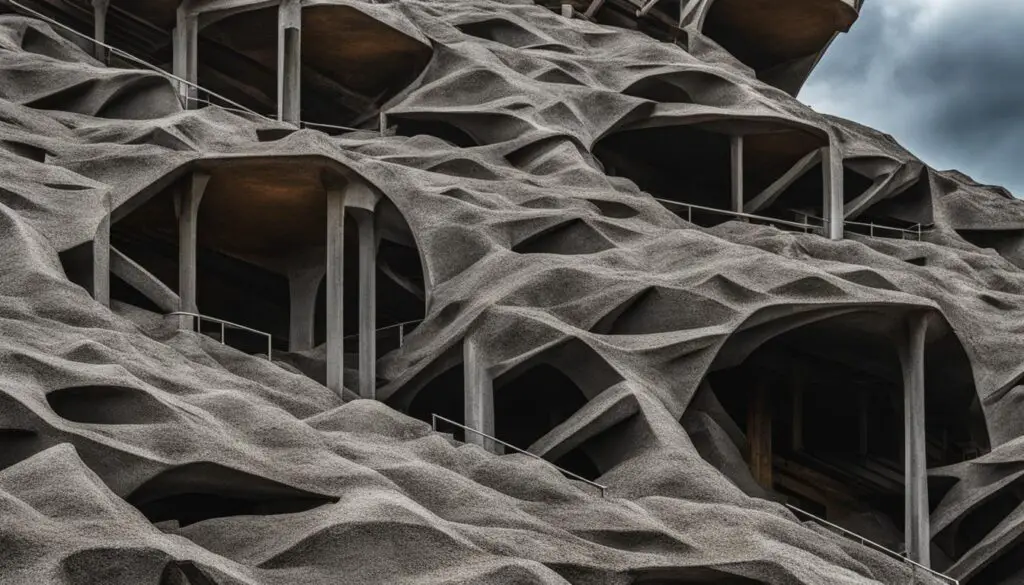
In summary, Ferro Cement offers a wide range of benefits, from its lightweight and flexible nature to its cost-effectiveness and environmental sustainability. We believe that it is an excellent choice for anyone looking to build a strong, durable, and cost-effective structure.
Advantages of Ferro Cement
As we have previously discussed, there are several advantages of using Armored concrete in construction projects. Let’s take a closer look at nine key benefits of this popular building technique:
| Advantages | Description |
|---|---|
| Durability | The combination of cement, steel mesh, and fiber mesh results in a structure that is strong and long-lasting, making Ferro Cement ideal for withstanding harsh weather conditions. |
| Flexibility | Armored concrete can be molded into any shape or size, allowing for unique and creative designs that suit the specific needs of the project. |
| Low Cost | Compared to traditional building methods, Ferro Cement is a cost-effective solution that requires minimal maintenance, providing cost savings throughout the lifespan of the structure. |
| Lightweight | Armored concrete is significantly lighter than other construction materials such as brick or concrete, reducing the weight load on the foundation and making transportation and installation easier. |
| Environmentally Sustainable | Using Ferro Cement is an eco-friendly choice as it requires less energy and material resources to build, resulting in a smaller carbon footprint than traditional building methods. |
| Versatility | Armored concrete can be used for various applications, including roofing, water tanks, boats, sculptures, and architectural elements, making it a versatile building material. |
| Quick Construction | Ferro Cement is quick and easy to construct, saving time compared to other construction methods, resulting in faster project completion times. |
| Fire Resistance | Due to the use of steel and fiber mesh, Armored concrete is highly resistant to fire, making it an excellent choice for structures that require a high degree of fire safety. |
| Low Maintenance | Ferro Cement requires minimal maintenance over its lifespan, making it a cost-effective solution that is easy to maintain. |
As you can see, Armored concrete offers numerous advantages compared to traditional building methods, making it a desirable choice for construction projects of different types and scales.

Disadvantages of Ferro Cement
While Armored concrete offers numerous benefits, it is not without its downsides. Understanding the potential drawbacks of Ferro Cement construction can help you make better-informed decisions about its use in your building project. Some of the disadvantages of Ferro Cement include:
- Difficult to repair: Armored concrete can be challenging to repair if it becomes damaged, requiring specialized knowledge and equipment.
- Susceptible to cracking: Over time, Ferro Cement can develop hairline cracks which may compromise its structural integrity.
- Less commonly used: Compared to traditional construction materials such as brick and concrete, Armored concrete is still a relatively uncommon building material, making it more difficult to find skilled labor and specialized equipment.
- Limited load-bearing capacity: Ferro Cement is best suited to small to medium-sized construction projects, as it has lower load-bearing capacity than traditional concrete structures.
It is important to carefully evaluate the pros and cons of Armored concrete construction before embarking on your project. However, with proper planning and execution, Ferro Cement can offer a unique and cost-effective alternative to traditional building materials.
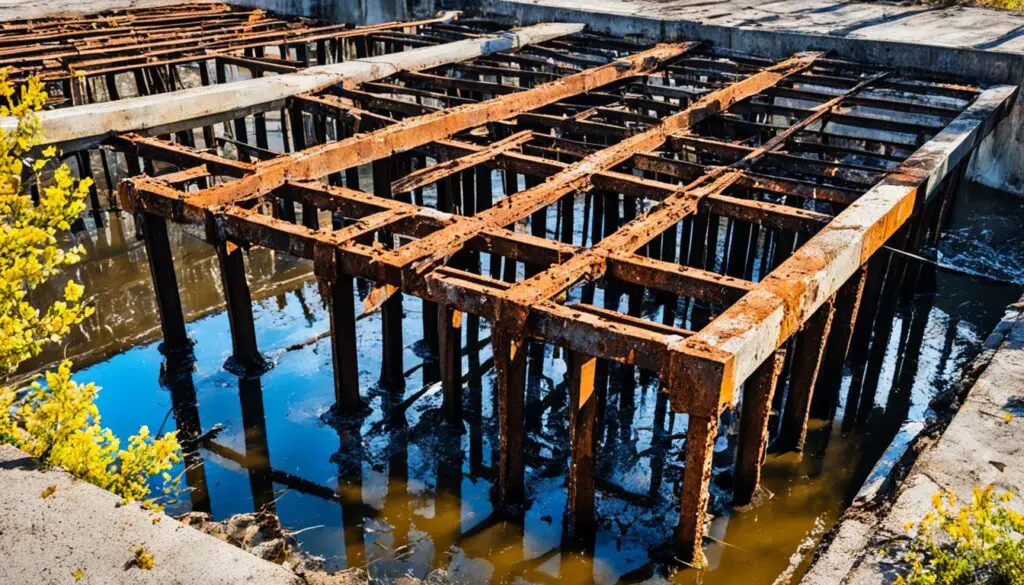
Cost of Ferro Cement
When it comes to building with Armored concrete, the cost is an important consideration. Several factors can affect the overall cost of a Ferro Cement construction project, including the size and complexity of the structure, the materials and labor required, and the location of the project.
Generally, Ferro Cement is considered to be a cost-effective construction technique compared to traditional concrete structures. This is because it requires fewer materials and less labor for its construction, making it a more affordable option for those on a budget.
However, it’s important to note that the cost of Armored concrete can vary depending on the specifics of each project. While it may be more affordable in some cases, it may be more expensive in others due to the complexity of the design or the need for specialized materials.
Regardless of the cost, it’s important to consider the long-term benefits of Ferro Cement when making your decision. With its durability, low maintenance requirements, and versatility, Armored concrete can provide significant cost savings over time.

Ferro Cement Price in India
One of the deciding factors when it comes to the construction project is the cost of the materials. The price of Ferro Cement in India can vary based on several factors such as the quality of materials used, the location of the supplier, and the current market rates.
In general, the cost of Ferro Cement is relatively low compared to other construction materials, making it a cost-effective solution for many projects. As of the current market rates, Armored concrete can cost between INR 50 to INR 100 per square foot in India. However, it’s important to note that certain applications may require more specialized materials that can increase the overall cost.
If you’re interested in buying Ferro Cement materials in India, you can use the following link: Buy Armored Concrete Materials.

Ferro Cement: Step-by-Step Construction Process
Constructing a Ferro Cement structure involves a complex process that requires attention to detail. The following step-by-step guide outlines the process of constructing a Armored concrete structure, from start to finish:
1. Prepare the Framework
The first step in constructing a Ferro Cement structure is to create a framework using metal bars or PVC pipes. This framework will serve as the base for the structure and must be measured and cut to fit the intended design and specifications.
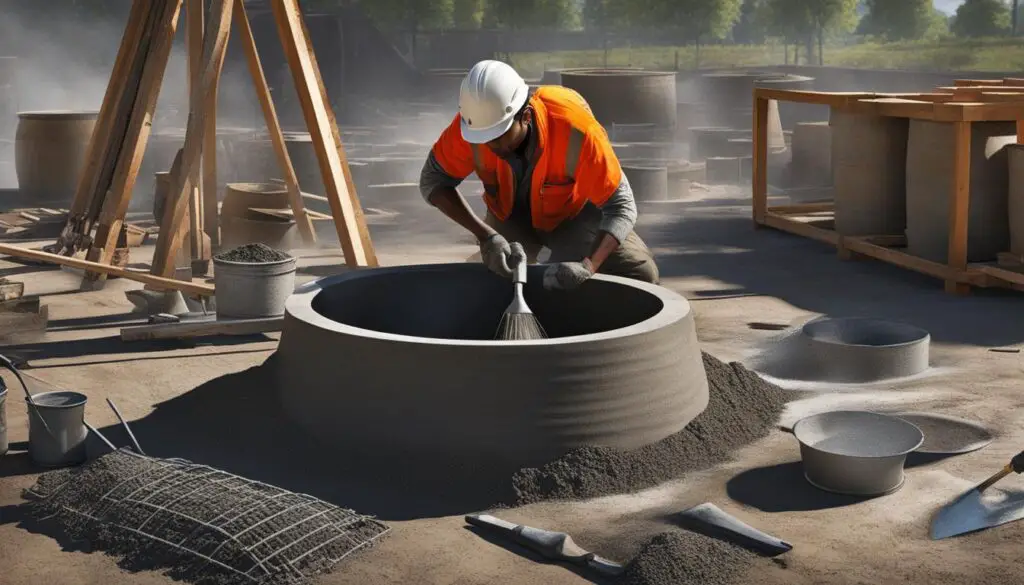
2. Prepare the Mortar
Next, prepare the cement mortar mix by blending cement, sand, and water in a specific ratio. This mix should be stiff enough to be applied on the mesh but not too stiff to reduce its workability.
3. Apply the First Layer
Apply the first layer of cement mortar to the framework, ensuring that it covers the framework fully and completely. This layer should bond strongly with the framework to ensure a solid foundation for the rest of the layers.
4. Reinforce with Steel Mesh
Apply the first layer of steel mesh to the cement layer while it is still wet. Ensure the mesh does not come into contact with soil or other substances that may corrode it. This mesh will add strength and durability to the structure when bonded with the Armored concrete.
5. Apply the Second Layer
Apply the second layer of cement mortar on the steel mesh, making sure to fill in any holes or gaps. It should also be built up to a minimal thickness to ensure a better bond to the reinforcement steel mesh.
6. Reinforce with Fiber Mesh
Apply the fiber mesh over the cement layer and press it into the wet cement. It should reinforce and stabilize the ferro structure further.
7. Repeat Steps 5 and 6
Repeat steps 5 and 6 until the desired thickness is achieved. Well-applied layers will create a strong yet lightweight structure with good corrosion-resistant properties.
8. Finish the Surface
The surface of the Ferro Cement structure must be finished to ensure a smooth, level appearance. The surface should be sanded and wiped clean to enhance the aesthetics of the structure.
The above process is only an overview but can be applied to any Ferro Cement structure, regardless of size or purpose.
Maintenance of Ferro Cement Structures
Proper maintenance is crucial for ensuring the longevity and stability of Ferro Cement structures. With regular inspection and upkeep, you can prevent minor issues from becoming major problems.
One important aspect of maintenance is protecting the surface of the structure from moisture, which can lead to corrosion and degradation. Apply a waterproof sealant to the surface regularly to keep it in good condition. It is also essential to clean the surface regularly to remove dirt, debris, and other buildup.
In addition to surface maintenance, you should also inspect the structure’s components, including the steel and fiber mesh reinforcement and the cement mortar. Look for signs of corrosion or cracking and address any issues promptly to prevent them from spreading. Replacing damaged or deteriorated components is crucial for maintaining the structural integrity of Ferro Cement structures.
“Regular maintenance is key to ensuring the longevity and durability of Ferro Cement structures.”

Table 1: Maintenance Best Practices for Ferro Cement Structures
| Best Practice | Explanation |
|---|---|
| Apply a waterproof sealant | Protects the surface of the structure from moisture and other environmental factors that can cause corrosion and degradation |
| Regular cleaning | Prevents the buildup of dirt and debris that can contribute to corrosion and deterioration of the surface |
| Inspection of steel and fiber mesh reinforcement | Allows for the prompt replacement of any damaged or deteriorated components, ensuring the structural integrity of the structure |
| Inspection of cement mortar | Identifies any cracks or other issues with the cement mortar, allowing for repair or replacement before problems escalate |
Case Studies: Successful Ferro Cement Projects
At this point, we have explored the definition, materials, properties, applications, advantages, disadvantages, cost, construction process, and maintenance requirements of Ferro Cement. To showcase the effectiveness of this construction technique, we will now delve into some real-life examples of successful Ferro Cement projects.
One noteworthy example of a successful Ferro Cement project is the Tea Kettle Island, located in Portland, Maine. Constructed by the architectural firm Carol A. Wilson Architects, the island is entirely made of Ferro Cement.
An impressive Ferro Cement project is also the St. John’s Anglican Church in Kerala, India. The church features intricate Ferro Cement detailing on its exterior and has successfully withstood various natural disasters over the years.
Another great example of successful Ferro Cement projects is the work of Mexican architect Heatherwick Studio. Their Ferro Cement creations include installations for the 2012 Olympic Games in London, UK, and the Vessel, a honeycomb-like structure in New York City’s Hudson Yards.

“Ferro Cement provides architects and designers with a uniquely versatile construction technique that can be used for a range of applications. Its strength, durability, and environmental sustainability make it an attractive choice for both functional and aesthetic reasons.”
Future Trends and Innovations in Ferro Cement
As we look towards the future of construction, Ferro Cement is poised to play a significant role. Advancements in technology and materials are helping to expand the scope of what can be achieved with Ferro Cement, making it a more versatile and attractive option for architects and builders alike.
One of the most promising trends is the use of Ferro Cement in sustainable construction. With a focus on reducing the environmental impact of buildings, Ferro Cement offers several advantages over traditional construction methods. Its lightweight nature and flexibility in design make it easier to create green buildings that are energy-efficient and environmentally friendly.
Another trend in Ferro Cement is the use of innovative materials to enhance its properties. For example, the addition of carbon fiber can improve the strength and durability of Ferro Cement structures, while the incorporation of nano-cement particles can enhance its resistance to corrosion and cracking.
Innovation is also being driven by new production techniques. One emerging method involves using 3D printing technology to create customized Ferro Cement structures. This approach offers greater flexibility in design and can help to reduce waste by using only the necessary amount of materials.
As we look towards the future of Ferro Cement, we can expect to see continued innovation and integration with new technologies. With its many benefits and applications, Ferro Cement is proving to be a construction material with a bright future.
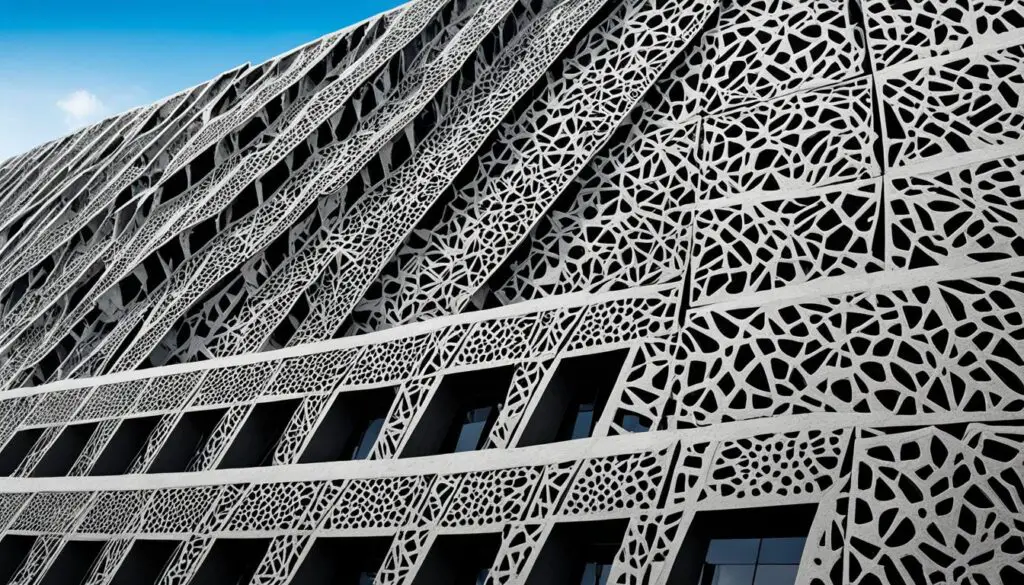
Conclusion
After delving deep into the world of Ferro Cement, we hope that you now have a comprehensive understanding of this versatile construction technique. From its definition and materials required to its applications, advantages, and disadvantages, we have covered all key areas.
It’s essential to note that Ferro Cement offers numerous benefits over traditional construction methods, including its lightweight nature, flexibility in design, cost-effectiveness, and environmental sustainability. However, it’s crucial to be aware of any potential disadvantages, such as the challenges associated with its construction and maintenance.
If you’re considering using Ferro Cement in your construction project, we recommend thorough research and consultation with experts to ensure its suitability for your specific needs. Overall, Ferro Cement is an innovative and exciting technology with a promising future in the construction industry.
Thank you for reading and we hope you found this guide helpful. If you have any questions or comments, please feel free to reach out to us.
Thanks For the Great Attention!
Good Bye & Take Care
Happy Learning
Also, Read,

